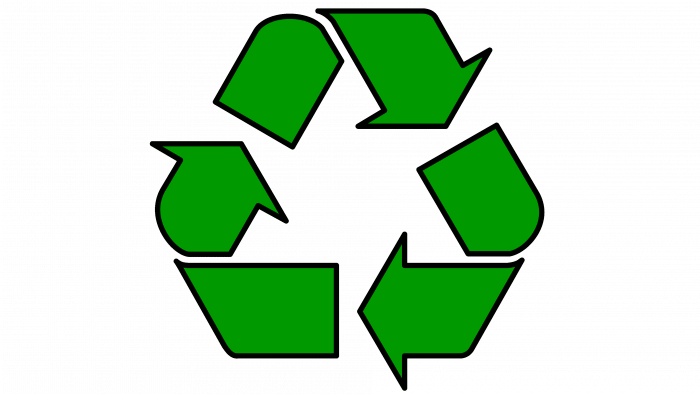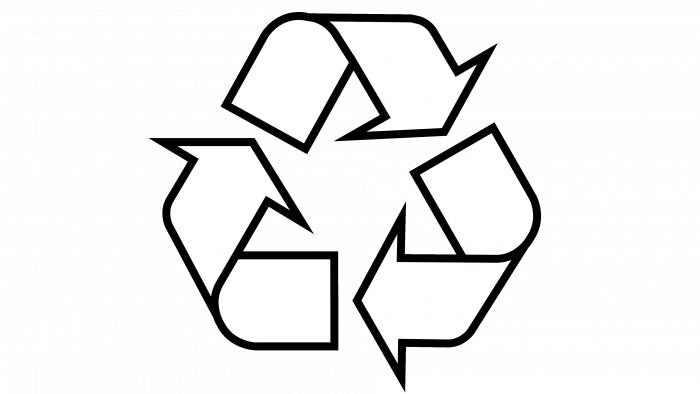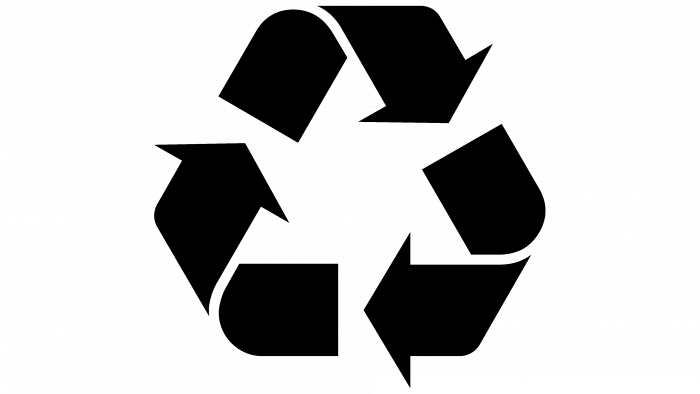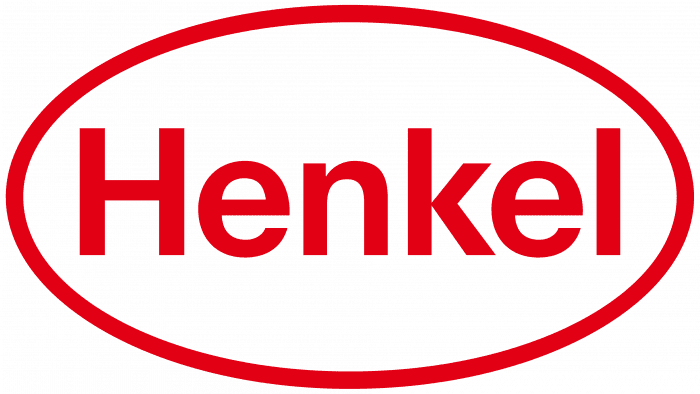The world-famous Recycle logo is found on many products and packaging. It acknowledges the safety of the materials and their recyclability. The label is used for environmental purposes and draws attention to environmental issues.
Recycle A brand overview.
Meaning and History
Chicago-based Container Corporation of America (CCA), a major recycled paperboard manufacturer, organized and sponsored the best recycling logo contest. It was conducted among US students studying art and design. The key objective of the event was to attract global attention to the problems of nature on the globe. The winner was the project of Gary Anderson, a 23-year-old student from the University of Southern California. Now, his work is in the public domain.
At the same time, Anderson studied to be an engineer, not a graphic designer. Later, he clarified that creating the logo took him no more than two days and that he was awarded almost two thousand dollars. Moreover, the student did not develop the logo from scratch since he already had blanks—arcs, and arrows from another presentation.
What is Recycle?
Recycle – Waste recycling process and garbage recycling icon. It appeared in 1970 on the initiative of the Container Corporation of America, when Earth Day was first celebrated. Its author is student Gary Anderson, who won a competition.
However, it is believed that the universal mark had a prototype. An almost similar stamp with two arrows could serve as inspiration. In the 1960s, Volkswagen used it for parts of their cars that had to be refurbished. However, Anderson’s simple and thoughtful design has become an iconic symbol of sustainability. Its graphics are understandable in any language and do not require additional text – there was never a single word in the logo.
At first, the globality of the sign was questioned: would they want to use it everywhere? But now, there are recycling markings and labels on many items of everyday use. They allow you to determine how the various packaging materials are processed.
The Recycle symbol consists of three reverse arrows—the twisted Möbius ribbons. They form a cyclical triangle with no beginning or end. It denotes the continuity of the processing process—an endless cycle of transitioning raw materials from one form to another without loss of quality or harm to the environment.
Usually, the icon has a black outline and a green fill inside. However, since it does not have standardized features, it is not uncommon for companies, enterprises, and organizations to change its design, leaving only a recognizable form. The American Paper Institute has developed four versions for different purposes, and Unicode offers no less than six logo variations. As a rule, arrows are bright green and dark green, with or without edging along the edge color, where the upper side is lighter and the lower side is darker. Black and white modification is also considered equal.
Recycle: Interesting Facts
The recycling symbol, a beacon of the environmental movement and closely tied to Earth Day’s inception, carries a narrative rich in history and global impact.
- Origin with Earth Day: Introduced in 1970 alongside the first Earth Day, the recycling symbol was designed to foster environmental awareness and has since become the worldwide mark of recycling initiatives.
- Design Competition: The symbol emerged from a contest by the Container Corporation of America, aimed at engaging youth in environmental conservation, specifically to symbolize paper recycling.
- Young Creator: Gary Anderson, then a 23-year-old University of Southern California student, won the contest with his enduring design, which has become the universal recycling sign.
- Mobius Strip Influence: Anderson drew inspiration from the Mobius strip, illustrating recycling’s perpetual cycle with three interlocking arrows forming a loop.
- Public Domain Status: Uniquely, the recycling symbol is not restricted by copyright, allowing unrestricted use to advocate for recycling without legal or financial barriers.
- Material-Specific Variants: From the original design, specific versions have evolved to denote recycling processes for varied materials like paper, plastic, glass, and metal.
- Worldwide Recognition: Among the planet’s most identifiable symbols, its simplicity and appeal have significantly advanced recycling efforts internationally.
- Packaging Indicator: Frequently appearing on packaging, the symbol guides consumers towards recycling options or identifies products containing recycled materials, promoting eco-friendly decisions.
- Cultural and Artistic Resonance: Beyond its practical role, the recycling symbol has permeated art and culture, symbolizing the broader ethos of environmental care and sustainability.
- Embraced by Communities: Globally, cities, organizations, and businesses adopt this emblem within their waste management and recycling programs, emphasizing community involvement in conservation practices.
The recycling symbol’s creation and widespread acceptance underscore the escalating commitment to environmental stewardship and waste reduction. It stands as a potent symbol urging global recycling and conservation actions.
Font and Colors
The Recycle logo does not have rigid frames and is generally accepted standardization, so any text and font can accompany it. After all, the most important thing for her is the triangle shape with reverse arrows.
The color does not matter much, but several shades of green predominate traditionally since it is closest to an eco-friendly palette dictated by nature itself. A combination of black arrows on a white background is also used.
FAQ
What is the symbol of recycling?
The recycling symbol consists of three arrows forming a triangle. It is known worldwide and designates items that can be recycled. It can be found on various products, packaging, and recycling bins to remind us to recycle for the environment’s health.
There are two Unicode characters for this symbol:
- U+2672 (♲) “UNIVERSAL RECYCLING SYMBOL” is usually just an outline.
- U+267B (♻) “BLACK UNIVERSAL RECYCLING SYMBOL,” shaded black to make it stand out.
These symbols help promote recycling and proper waste management.
What do the three arrows mean in recycling?
The three arrows on the recycling symbol represent a key step in waste management: reduce, reuse, and recycle. They create a cycle that helps us use resources wisely and reduce waste.
- Reduce: This arrow encourages us to create less waste. By using and throwing away less, we help reduce the amount of waste that needs to be disposed of.
- Reuse: This arrow indicates the reuse of items. We can extend their lifespan and reduce their environmental impact by finding new ways to use old items, such as repurposing or donating them.
- Recycling: The last arrow means recycling. This involves collecting and recycling old materials into new products. Recycling conserves natural resources, requires fewer raw materials, and typically requires less energy than making products from scratch. This step completes the cycle, returning materials to use and keeping them out of landfills.
What symbols mean recycle?
Seven main symbols indicate that plastic items can be recycled, each representing a different type of plastic.
- PETE or PET (Polyethylene Terephthalate): Commonly found on water bottles and food containers, PET is one of the most frequently recycled plastics, known for its lightweight and strength.
- PVC or V (Polyvinyl Chloride): Used in items like plumbing pipes and clear food packaging, PVC is less often recycled because it contains harmful chemicals.
- PP (Polypropylene): This plastic, found in yogurt, syrup, and medicine containers, is valued for its heat resistance. Recycling rates for PP are growing.
- Other (Various Plastics): This catch-all category is for plastics that don’t fit standard categories. Due to their mixed composition, these items are difficult to recycle.
- HDPE (High-Density Polyethylene): This strong, extensively recycled plastic is used in milk jugs, detergent bottles, and some bags.
- LDPE (Low-Density Polyethylene): Found in grocery bags and some food wraps. It is recycled more often, although not as widely as HDPE or PET.
- PS (Polystyrene): Also known as Styrofoam, PS is used in coffee cups and take-out containers. However, its bulky nature and high transportation costs make it less frequently recycled.
Each symbol is usually part of a recycling triangle with a number indicating the type of plastic.
What logo is used for recycling?
The recycling logo features a Möbius strip with three curved arrows forming a continuous loop. Based on a shape discovered in 1858 by mathematician-astronomer August Ferdinand Möbius, this design symbolizes the endless recycling cycle. Each arrow on the logo represents a stage in the recycling process:
- Collection: The first arrow concerns the collection of recyclable materials. This step involves collecting used items that can be recycled into new products.
- Processing: The second arrow indicates the transformation of collected items into raw materials, which can be used to produce new products.
- Purchasing: The third arrow represents purchasing products made from recycled materials. This encourages the recycling cycle to continue.
The recycling logo is recognizable worldwide on various products, packaging, and recycling bins. It indicates that an item is recyclable or made from recycled materials.





